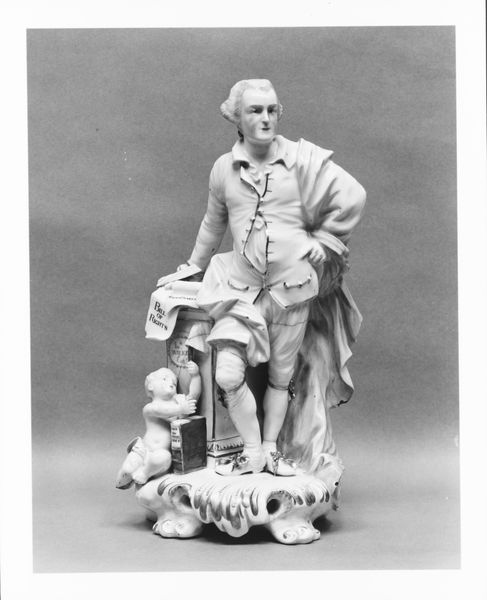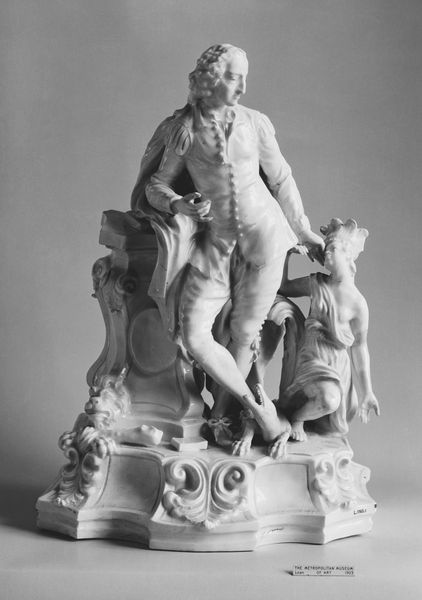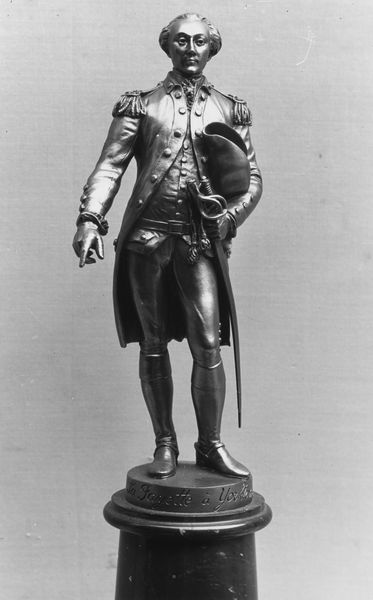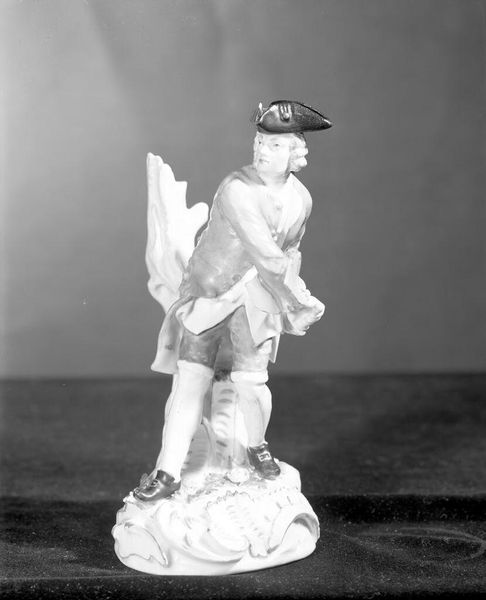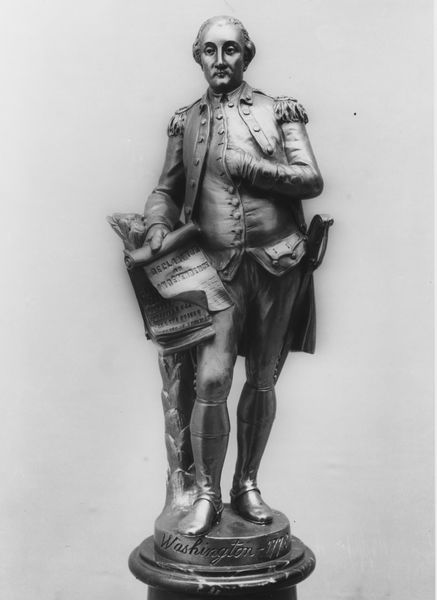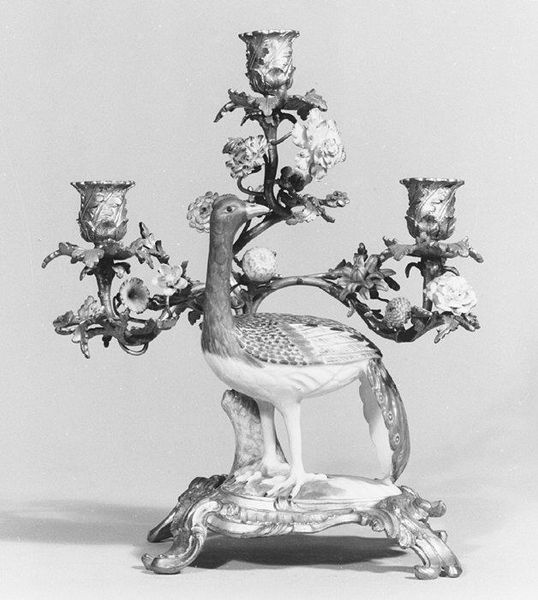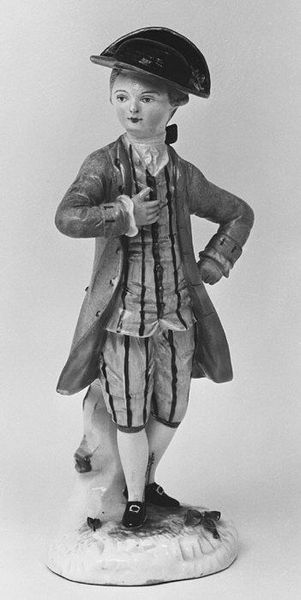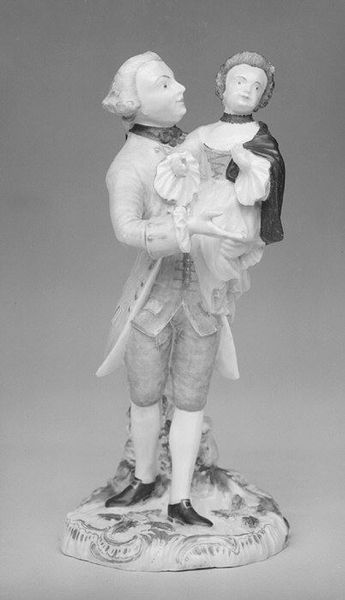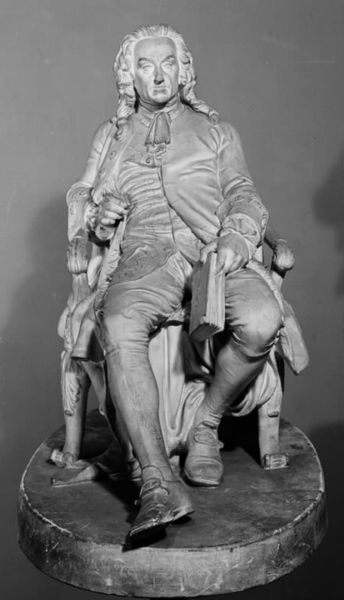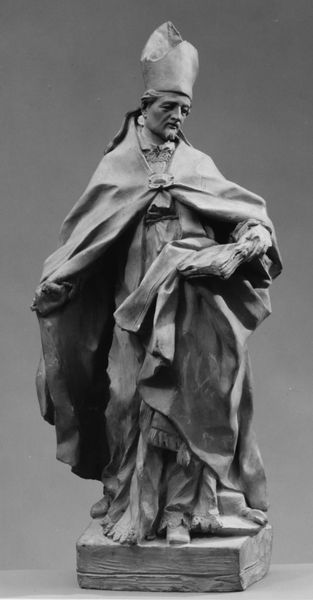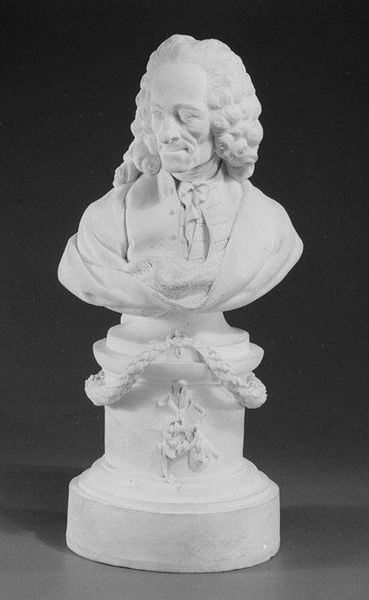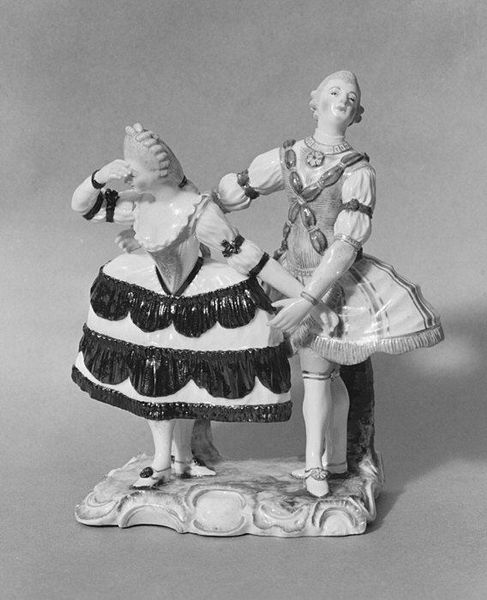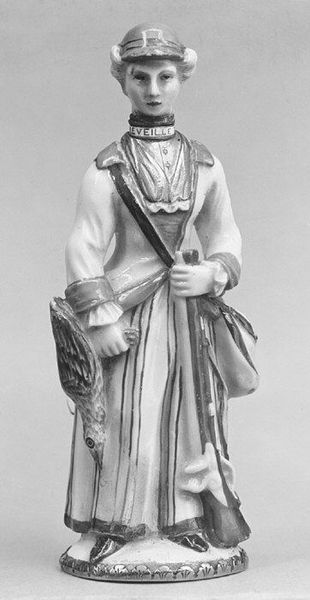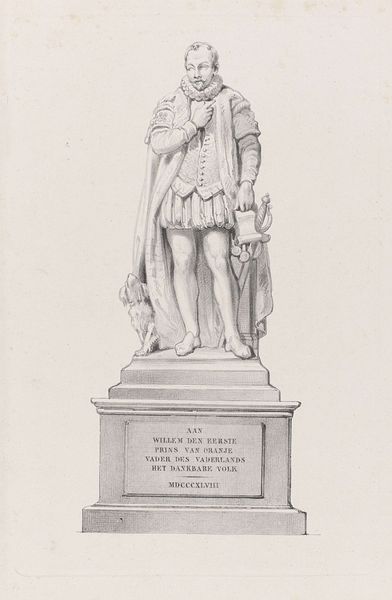
ceramic, porcelain, sculpture
#
sculpture
#
ceramic
#
porcelain
#
figuration
#
sculpture
#
decorative-art
#
miniature
#
rococo
Dimensions: Height: 13 in. (33 cm)
Copyright: Public Domain
Editor: We're looking at "Standing Man," one of a pair, crafted around 1740-1750 by Meissen Manufactory, currently residing here at the Met. It's porcelain. He seems so self-assured, standing atop that ornate base. What strikes you first about the piece? Curator: The sculpture compels consideration of its meticulous detail and construction. Observe the elaborate rococo base— the swirling acanthus leaves contrasting against the figure's static pose. How does this tension affect the overall composition, in your opinion? Editor: I suppose it's the rigidity of the man versus the free-flowing ornamentation of the base...he is so erect and it is like visual noise surrounding him. But what is the correlation between the two, if there is one? Curator: The contrast establishes a visual hierarchy. Our gaze moves from the base, with its textured complexity, upwards toward the figure. Consider, also, the artist’s manipulation of line: the verticality of the figure echoes in the vertical emphasis of the base. How does this affect our reading of the sculpture's presence? Editor: That verticality makes it seem taller, more commanding than perhaps it is. It creates a sense of… dignity. Curator: Precisely. And we cannot overlook the material itself. Porcelain’s inherent delicacy lends itself to such refined modeling. Its inherent translucence interacts with light and shadow, imbuing the surface with subtle variation and visual depth. Editor: I never thought about it that way! Looking at form and how form affects the subject, not the subject itself. Curator: Indeed. It is a rewarding means of aesthetic assessment.
Comments
No comments
Be the first to comment and join the conversation on the ultimate creative platform.
